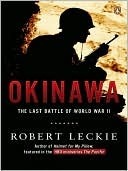More on this book
Kindle Notes & Highlights
Started reading
October 2, 2025
as some perceptive Okinawans were already privately assuring each other: “Nippon ga maketa. Japan is finished.”
On the night of March 9, to prove their worth and sound the requiem of the “unconquerable” island empire, the Superforts already striking Tokyo, Nagoya, Osaka, and Kobe in pulverizing three-hundred-plane raids came down to six thousand feet over Tokyo to loose the dreadful firebombs that consumed a quarter of a million houses and made a million human beings homeless while killing 83,800 people in the most lethal air raid in history—even exceeding the death and destruction of the atomic-bomb strikes on Hiroshima and Nagasaki that were to follow.
For eight months following Pearl Harbor, the victory fever had raged unchecked in Japan. During that time the striking power of America’s Pacific Fleet had rolled with the tide on the floor of Battleship Row. Wake had fallen, Guam, the Philippines. The Rising Sun flew above the Dutch East Indies, it surmounted the French tricolor in Indochina, blotting out the Union Jack in Singapore, where columns of short tan men in mushroom helmets double-timed through silent streets. Burma and Malaya were also Japanese. India’s hundreds of millions were imperiled, great China was all but isolated from the
...more
But Imperial Headquarters, still keeping the national mind carefully empty of news of failure, announced hits of almost 100 percent. Imperial Headquarters did not believe its own propaganda, of course. Its generals and admirals privately guessed hits ranging from 12 to 50 percent, but they also assumed that nothing but battleships and carriers had been hit.
Thus was the kamikaze born, in an outburst of national ecstasy and anticipated deliverance. In the homeland a huge corps of suiciders was organized under Vice Admiral Matome Ugaki. By January 1945 they were part of Japanese military strategy, if not the dominant part. So many suiciders would be ordered out on an operation, to be joined by so many first-class fighters and bombers: the fighters to clear the skies of enemy interceptors, the bombers to ravage American shipping and guide the kamikaze to their victims.
So the suiciders were hailed as saviors: wined, dined, photographed, lionized. Many of them attended their own funerals before taking off on their last mission. Farewell feasts were held in their honor at the numerous airfields on the southernmost Japanese island of Kyushu. Solemn Samurai ceremonies were conducted, and many toasts of sake drunk, so that some of the pilots climbed aboard their airplanes on wobbly legs. It did not seem to occur to the Japanese—and especially Ugaki—that insobriety might affect the aim of the kamikaze and thus defeat the purpose of the suicide corps; and this was
...more


